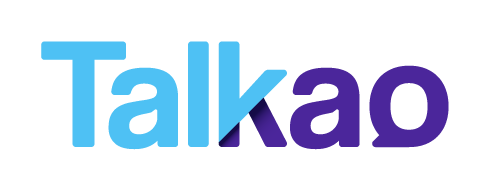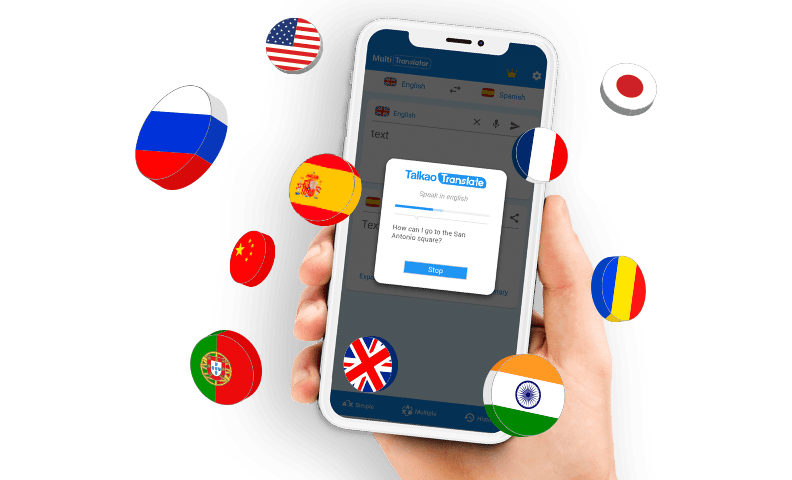
When you discover why translating can be an incredibly effective study tool, it might feel like science fiction. It all comes down to the changes that occur in your brain while learning a new language. As we’ll explain further, translation activates several areas of your brain related to memory and deductive thinking. Additionally, using translation as a study tool helps you review basic concepts and retain new knowledge for longer periods.
So, today you’ll learn about a new study tool that can help you ace your exams and boost your grades. Plus, it’s a resource suitable for learners of all ages—from elementary school to university.
Ready? Let’s dive in!
What happens in your brain when you translate? The core of translation as a study tool
Have you ever heard the saying that your brain “grows” when you learn a new language? For years, this was thought to be a metaphorical expression rather than an actual biological phenomenon. While your brain doesn’t literally “grow,” it does activate one of its most remarkable abilities: plasticity.
Brain plasticity refers to the ability to expand or adapt in response to challenges. When faced with a new challenge, the brain can activate areas that aren’t typically used on a daily basis. Think of it this way: in your everyday life, you rely on a set of linguistic tools embedded in your brain that allow you to communicate with others.
Every time you learn a new word, your brain needs to “make space” to accommodate this new piece of knowledge. However, in your native language, this process happens only momentarily and not throughout the day—except during three key periods of your life:
- When you were a baby learning to communicate.
- When you study intensively in an immersive environment.
- When you learn a new language.
Continuous, intensive learning compels your brain to keep the areas responsible for learning activated for longer durations. This is the foundation of using translation as a study tool.
But let’s go even deeper. What are the scientific and neurological reasons behind this “awakening and growth” of your brain? Stay tuned—we’re about to uncover them!
Neuroplasticity and the incredible brain power behind translation
Without delving too deeply into the scientific intricacies of the brain, let’s take a quick look at neuroplasticity. Understanding this remarkable capacity of the human brain helps explain why translation is such an ideal study tool.
You see, our brain operates through the activity of highly specialized cells known as neurons. These cells are responsible for generating thoughts, reasoning, and storing memories about everything happening around us. In short, neurons are the foundation of our intellectual and cognitive abilities.
However, neurons alone don’t create the magic of thought. The true power lies in the connections between millions of neurons in our brain. These connections, carried out through tiny electrical impulses, can be accelerated or slowed down depending on necessity. When facing a challenge, the brain speeds up these connections, and when less activity is needed, it slows them down—a kind of energy-saving mode for your brain.
This ability to increase or decrease brain activity is known as neuroplasticity. From a scientific perspective, it’s the key mechanism that allows us to learn and apply what we’ve learned. So, when we use translation as a study tool, we are engaging two of the three most critical moments of learning in life: acquiring a new language and mastering new knowledge.
But why choose translation as a study tool over conventional methods?

Why is translation more effective than a traditional study tool?
The impact of language learning on the brain has long been one of neuroscience’s most fascinating mysteries. According to scientific studies, bilingual or multilingual individuals tend to have a more developed prefrontal cortex compared to monolinguals. This part of the brain is responsible for memory and higher cognitive functions—essentially, it’s where rapid and automatic thought processing occurs.
By learning a new language or using translation as a study tool, you’re actively training and enhancing this area of your brain. As a result, your ability to memorize and apply knowledge becomes faster and more efficient.
Moreover, translation isn’t just the mechanical act of converting words from one language to another. It’s a deep cognitive process that engages several key areas of the brain, including:
- Broca’s Area and Wernicke’s Area: Critical for language production and comprehension. Switching between languages strengthens these regions, improving your ability to articulate ideas accurately.
- The Frontal Cortex: Responsible for attention and conflict resolution. Translating requires focusing on details and finding appropriate linguistic solutions, sharpening your concentration.
- The Limbic System: Linked to emotions, this area is activated when you learn culturally nuanced words and expressions, enriching your empathy and understanding of different perspectives.
Now that we understand how translation stimulates the brain, the next step is learning how to effectively incorporate it into your study routine. Let’s explore practical strategies for maximizing its benefits!
Three foolproof methods for using translation as a study tool
While we’ve only scratched the surface of the incredible complexity of the human brain, we can already glean some fascinating insights. We’ve seen that learning a new language not only helps our brain adapt but also enables it to “rewire” itself to accelerate thought processes. Additionally, learning languages can significantly enhance our memory, much like adding an extra memory card to a computer.
This combination of increased memory and faster thinking forms the cornerstone of effective study techniques. Moreover, finding an optimal study tool is crucial for excelling in many aspects of life. Here are three practical methods to leverage translation as a powerful study tool to ace your exams:
Method 1: Study using books in another language
Depending on your field of study and proficiency level, you’ll find a wealth of literature in different languages. In fact, many books are translations of works originally written in other languages. Thanks to globalization, knowledge knows no boundaries.
Today, a Norwegian student can learn from a Bengali professor—or vice versa—through the power of the internet. However, there’s an issue with translations done by third parties. Let’s explore why.
Books or scientific works are often translated by two types of professionals:
- An expert in the field who contributes their subject matter expertise.
- A translator proficient in both languages but not necessarily in the specific subject matter.
This setup can occasionally (though not always) lead to inaccuracies. Translators and technical advisors may add their own “flavor” to the text, which could result in losing some of the original intent or altering specific passages to better fit the target language.
By doing a direct translation yourself—using a camera translation app, for instance—you can analyze the original text without editorial changes. This approach can amplify the effectiveness of your study and help you retain knowledge more effectively.
Method 2: Practice “reverse translation”
At first glance, this method might seem like double the work, but it’s an extraordinary study tool. It’s simple to implement, and once you make it part of your routine, it won’t require extra time.
- Here’s how it works: Start by studying and taking notes in the traditional way. Write summaries, footnotes, or study outlines in your notebook or text editor. This is the usual process you’ve always followed.
- Then comes the twist: translate those notes into another language. There’s no “perfect” language to use; choose one you’re comfortable with or wish to improve.
Translating from your native language into a second or less familiar one activates higher cognitive areas responsible for language acquisition. This process “opens” the prefrontal cortex and enhances long-term memory in a scalable, progressive manner.
Your brain will classify these learnings as “new entries” in its memory bank, retaining both the original and translated versions of each concept. Over time, this dual encoding will train your brain to improve its overall learning capacity. For added efficiency, you can use a text translation app like Talkao Translator.
Method 3: Combine languages
This advanced technique takes your study routine to the next level by integrating multiple languages into the process. The goal is to merge languages during study sessions, essentially treating them as a unified system.
Admittedly, this sounds complex, but with gradual practice, it becomes manageable and highly effective. Start small by reading brief texts in a different language and attempting to translate them without assistance. Later, use translation tools like Talkao apps to cross-check your work, highlighting phrases or words where you made errors.
You can also use tools like the Talkao Dictionary to explore word meanings, synonyms, and practical usage, turning it into an additional resource for deep learning.
For a more dynamic approach, try studying in one language and testing yourself in another. For instance, study in your native tongue and create practice quizzes in a second language. This forces your brain to double its processing speed and strengthens your linguistic memory in a more intensive way.
By incorporating these methods, you’ll not only improve your academic performance but also enhance your brain’s adaptability, memory, and cognitive skills. Translation isn’t just a study tool—it’s a gateway to unlocking your full intellectual potential.

Choose the study tool that best fits you
While we’ve provided methods and study tools, it doesn’t mean you have to follow them to the letter. When it comes to finding the ideal study method, there are no strict rules or set doctrines. Ultimately, you need to discover the approach that best suits your needs and circumstances.
For instance, reverse translation or combining languages can be incredibly effective but may require a significant time investment. The same applies to the availability of texts or resources for the first method (translating on your own). This means you won’t find the perfect study tool until you’ve tried and tested different approaches.
Of course, we wouldn’t recommend starting with any new study tool the night before an exam. Nor can we guarantee that these methods will work wonders if you haven’t opened a book yet. There are no magic tricks or miracles without some effort on your part. The best advice is to try these tools well in advance and allow enough time to adapt.
Tips to optimize translation as a study tool
Although translation is a fantastic study tool, it involves a level of cognitive effort that should be gradually introduced. To make the most of this method, your brain needs time to adjust. Follow these tips to get started:
- Start small and build gradually: Begin with short texts or supplementary articles. You can translate materials that complement your classes or serve as review aids. Similarly, you can create summaries or study guides and translate them to “warm up” your brain. Once this becomes easier, you can dive deeper and expand your use of the tool.
- Leverage support tools: Thanks to modern technology, there are countless tools available to simplify translations. For instance, Talkao translation apps make the process automatic and easy. The Talkao Camera Translator lets you translate directly from the original text without needing to type it into a processor, speeding up the process regardless of the language or even the alphabet used.
Additionally, use the voice translator to create quick study notes, which can serve as an excellent mnemonic resource. Lastly, the Talkao Dictionary helps you understand meanings without having to translate word for word, offering a deeper and more effective learning experience.
Over time, you’ll see how translation evolves into a customizable study tool that helps you excel in your exams. Embrace this method, and watch your academic performance soar!








Newsletter